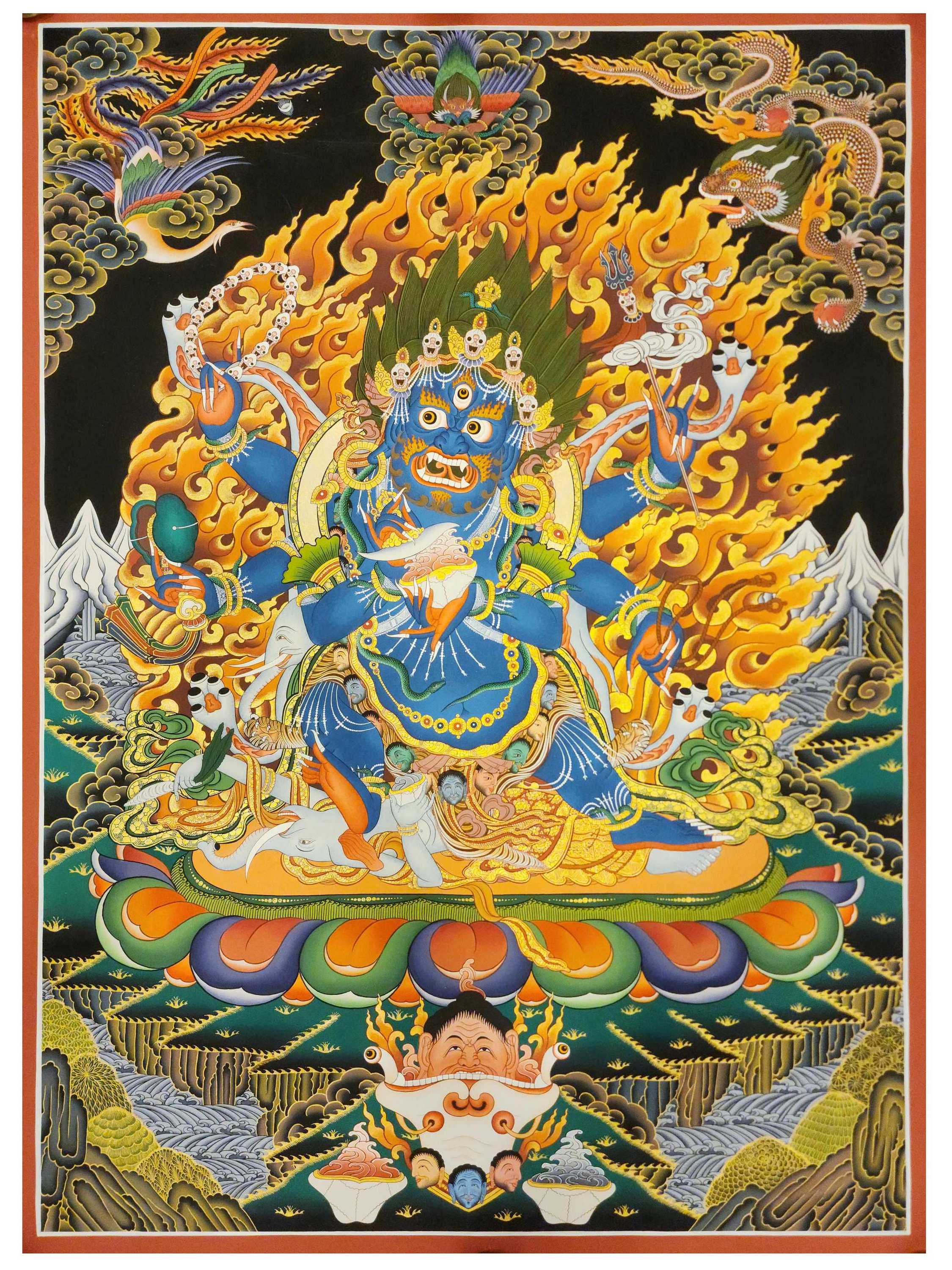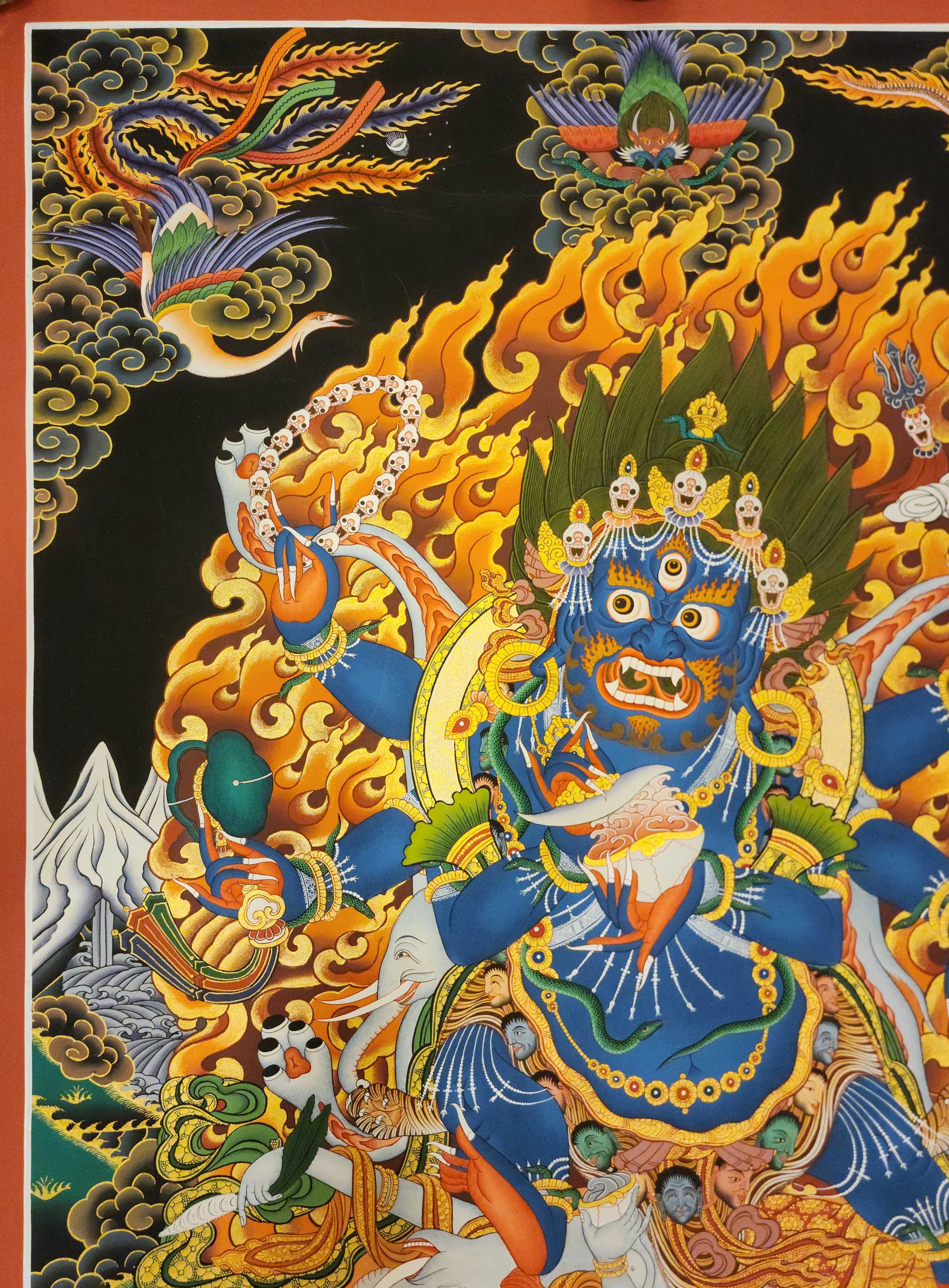It is possible that we still have it with our suppliers but the price could be different from before.
Feel free to order. We will verify availability and inform you promptly.

Safe Payment
We accept Paypal, Money Transfer, Bank Transfer
Confidence
Protection covers your purchase and personal data.
Worldwide Delivery
We ship Worldwide, except Russia.Shipping cost US$25.2 for upto 0.5 kgs

Hotline
Talk to help line for your question on 9841267335A thangka, also known as tangka, thanka, or tanka, is a vibrant and intricate Tibetan Buddhist painting that serves as a visual representation of spiritual teachings. Crafted with meticulous detail on cotton or silk appliqué, thangkas depict a wide range of subjects including Buddhist deities, sacred scenes, mandalas, and narrative stories. These sacred artworks are traditionally kept unframed and rolled up for storage, resembling ancient scrolls. To protect their delicate nature, thangkas are mounted on textile backings and often adorned with a silk cover on the front. Proper preservation in dry environments is crucial to maintain the integrity and longevity of the silk. Read More . . .
"His body is white. His face is wrathful and he has three eyes. He has six arms. His main right-hand holds a wish- fulfilling jewel (chintamani) mounted on a jewel-tipped handle, in front of his chest."
![]()
The Chintamani Jewel in White Mahakala's Hand
This is the wealth aspect of Mahakala which specifically supports the comfort and economic well-being of tantric practitioners. The following description is according to his sadhana: "His body is white. His face is wrathful and he has three eyes. He has six arms. His main right hand holds a wish- fulfilling jewel (chintamani) mounted on a jewel-tipped handle, in front of his chest."
![]()
White Mahakala's Bowl of Jewels
The White Mahakala is known as mGon po yid bzhin nor bu in Tibetan with the last four meaning 'Wish-Granting Gem,' and he is the special protector of Mongolian Buddhists. His iconography is rich in symbols delineating his 'wealth-deity' status. For example his skull bowl, rather than contain the mortal remains of his victims, is full of various jewels,
![]()
White Mahakala's Crown of Jewels
and his crown is made up of five jewels instead of the trademark five skulls.
![]()
The Elephant Goad
The other notable departure from the normal Mahakala iconography is the elephant goad held in the center left hand, the sharp point of which symbolizes penetrating awareness.
![]()
Two Elephants Under His Feet
Also, in contrast to other Mahakalas, he stands on two elephants rather than one.
![]()
White Mahakala in Tribhanga Central Tibet 7th century
The elephant skin stretched at the back refers to the deity having torn asunder the pachyderm of ignorance. Another interesting aspect of White Mahakala is that he is occasionally shown in the tribhanga posture. In this typical stance of the body, the head, torso, and legs slant in contrary directions. The legs and hips jutt to the right, the trunk to the left, and the neck and head then again gently to the right. It is a lyrical, dreamy, very graceful pose. The three curves formed by the body symbolize the three worlds, upper, lower and middle, better known in Sanskrit as triloka. This is also popularly known as the posture of three bends. White Mahakala is popular for both mundane as well as spiritual reasons, ranging from the basic desire for wealth and prosperity to the ultimate attainment of the precious jewel, which is none other than the Buddhist Dharma.


















 of White Mahakala,
of White Mahakala,  of White Mahakala,
of White Mahakala,  of Mahakala Black" title="Buddhist Hand Painted Thangka
of Mahakala Black" title="Buddhist Hand Painted Thangka  of Mahakala Black" title="Buddhist Hand Painted Thangka
of Mahakala Black" title="Buddhist Hand Painted Thangka  of White Mahakala" title="Tibetan Thangka
of White Mahakala" title="Tibetan Thangka 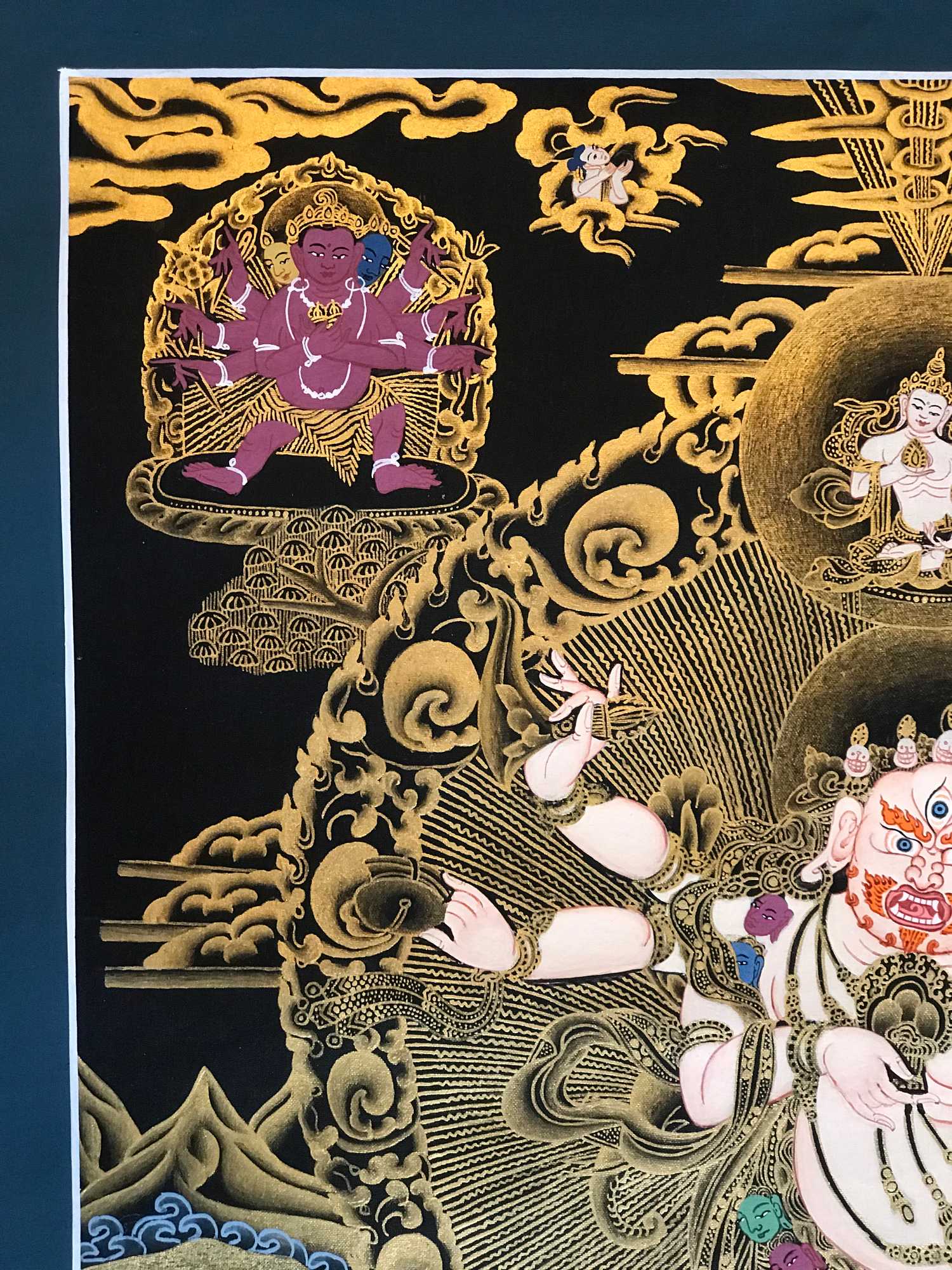 of White Mahakala" title="Tibetan Thangka
of White Mahakala" title="Tibetan Thangka  of Black Secret Accomplishment Hayagriva,
of Black Secret Accomplishment Hayagriva,  of Black Secret Accomplishment Hayagriva,
of Black Secret Accomplishment Hayagriva,  Real Gold" title="Mahakala Four Arms Tibetan Hand Painted Thangka
Real Gold" title="Mahakala Four Arms Tibetan Hand Painted Thangka  Real Gold" title="Mahakala Four Arms Tibetan Hand Painted Thangka
Real Gold" title="Mahakala Four Arms Tibetan Hand Painted Thangka  Real Gold" title="Mahakala Black, Buddhist Handmade Thangka Painting, Tibetan Style,
Real Gold" title="Mahakala Black, Buddhist Handmade Thangka Painting, Tibetan Style, 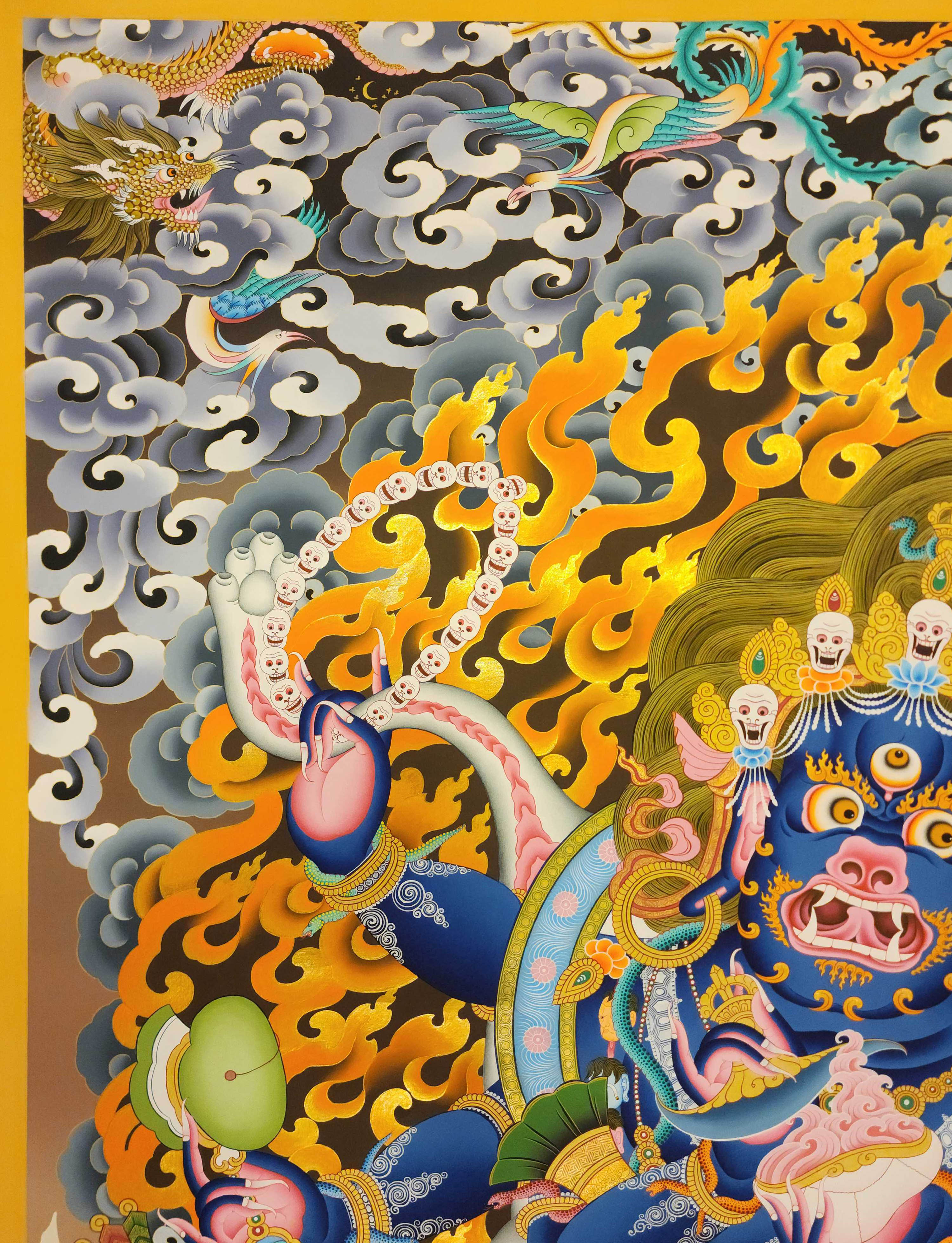 Real Gold" title="Mahakala Black, Buddhist Handmade Thangka Painting, Tibetan Style,
Real Gold" title="Mahakala Black, Buddhist Handmade Thangka Painting, Tibetan Style,  of Black Mahakala,traditional Color,
of Black Mahakala,traditional Color, 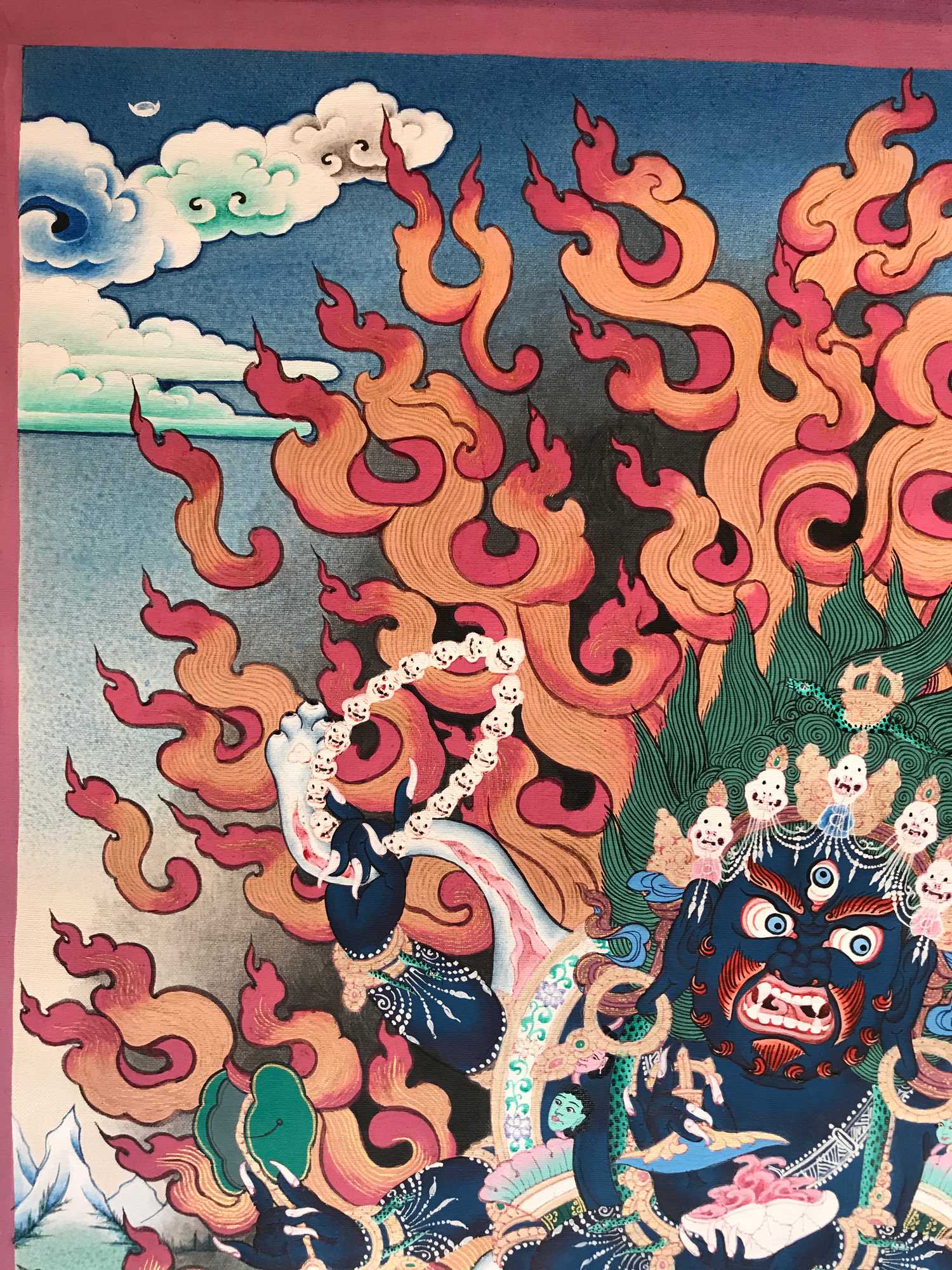 of Black Mahakala,traditional Color,
of Black Mahakala,traditional Color, 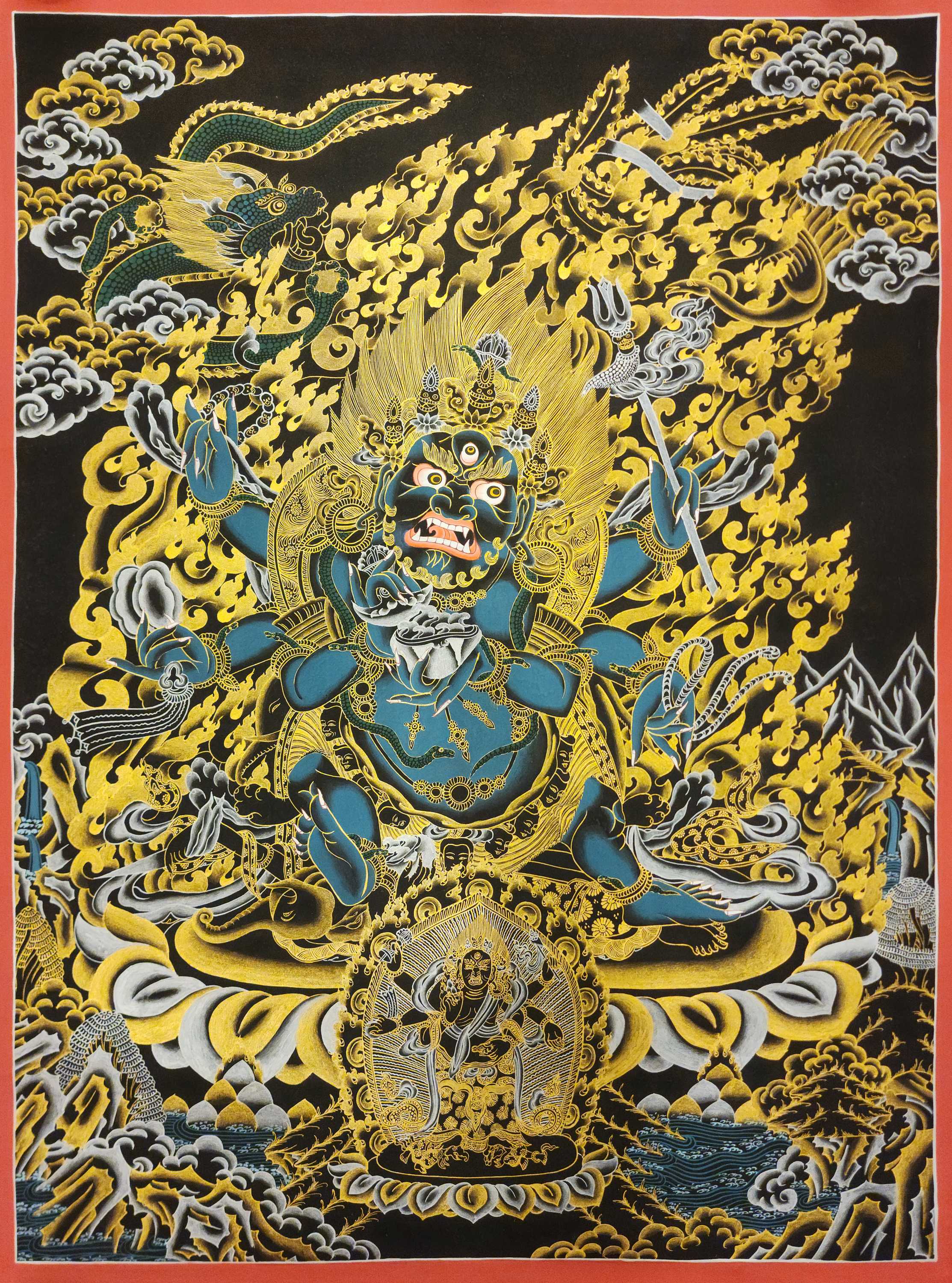 Black
Black 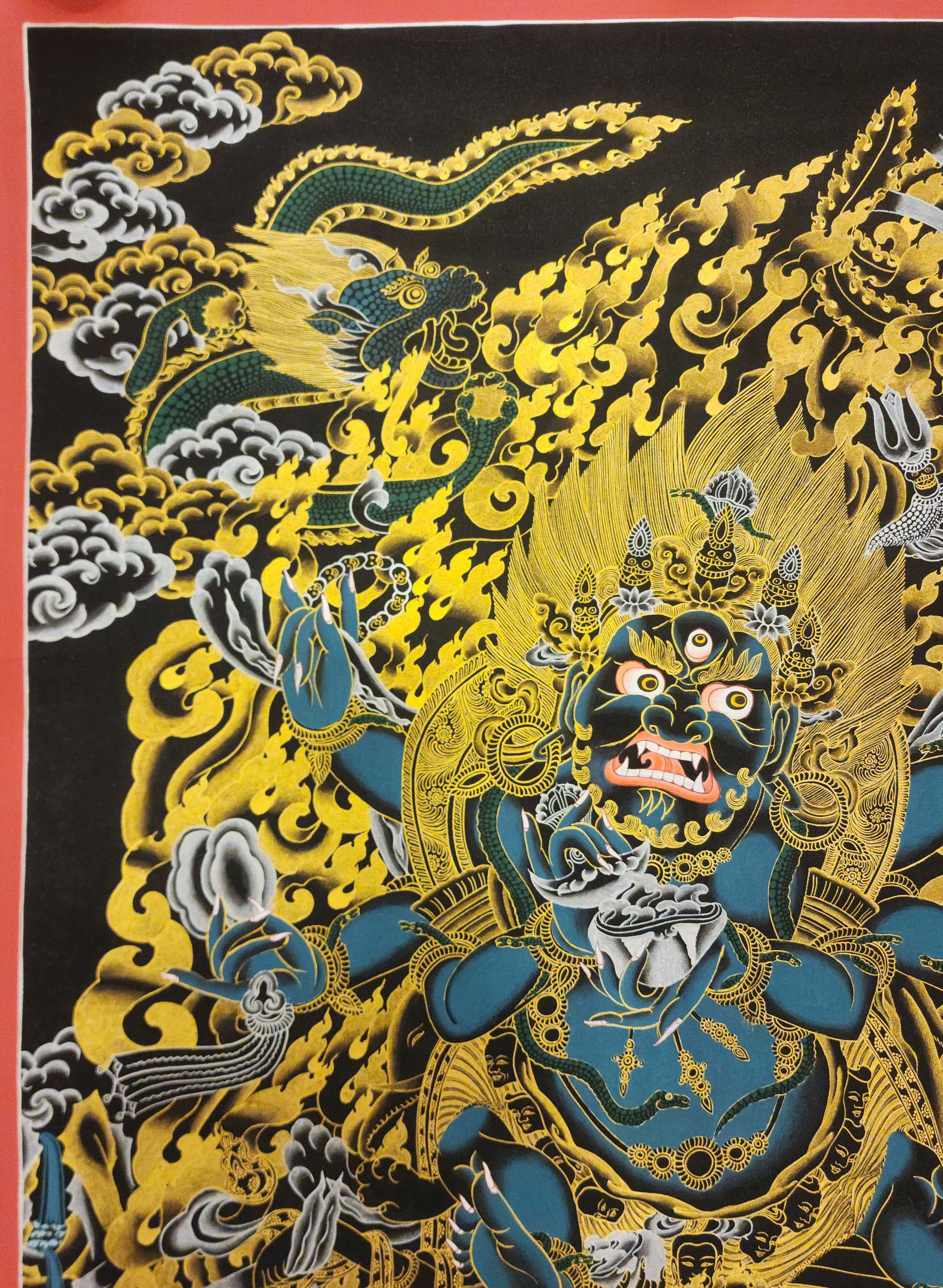 Black
Black  of Black Mahakala,
of Black Mahakala,  of Black Mahakala,
of Black Mahakala, 